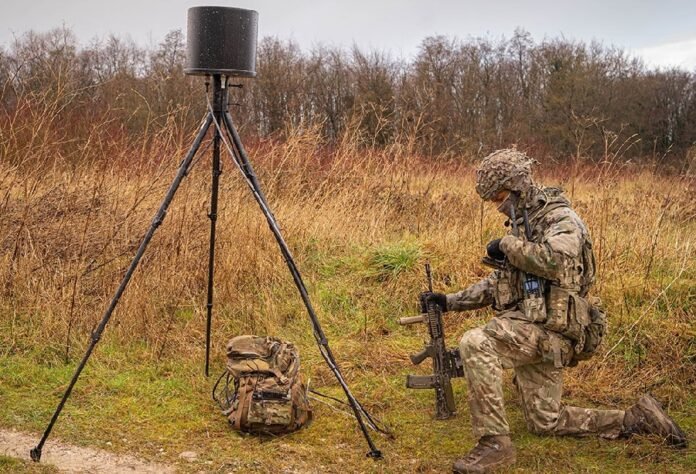Washington: In March, military and industry representatives from the United States and United Kingdom gathered to launch Joint Project Vanaheim, a collaborative effort initiated to “shape the future” of C-sUAS capabilities.
But as an example of just how fast capabilities are developing on battlefields around the globe, individuals involved say that just four months after launching Vanaheim, a new threat has emerged that the project has not even begun to think about.
Earlier this week, a defence source associated with the Armed Forces of Ukraine warned a briefing in London that Russia has increasingly begun use of fiber-optic wire control measures — a concept which allows first-person view (FPV) attack drones to avoid disruption by radio frequency jammers.
Speaking to an audience under condition of anonymity for operational security reasons, the source said that Ukraine’s FPV teams are the “most hunted soldiers on the battlefield,” and that the fiber-optic wire control systems are proving to be an unexpected threat.
“To counter these, you can cut the wire; shoot them down; or use directed energy weapons,” the source suggested before warning of an ongoing battle versus obsolescence when it comes to the deployment of sUAS and Counter-sUAS which can now be measured in just “weeks and months.”
Speaking several days later at the Royal International Air Tattoo at RAF Fairford on July 18, industry sources described ongoing efforts by the British Army and US Army to replace “ad hoc” acquisition of C-sUAS solutions with more permanent programmes of record.
According to Gil “Waco” Griffin, vice president for strategy and business development for L3Harris’s Space and Airborne Systems division, Exercise Vanaheim 3, which took place in June at the Joint Multinational Readiness Centre in Hohenfels, Germany, saw British and US Army units testing 20 different C-sUAS solutions to “detect, track, identify and defeat” quadcopters, the most common form factor for FPV attack drones.
But, Griffin said, Vanaheim 3 had not included any requirement to neutralise fiber-optic wire controlled sUAS.
“The fact of the matter is, if you rewind the clock six to nine months, we weren’t worried about this threat which is kind of fascinating,” Griffin said. “So, it’s evolving quickly, and I think that it’s important that we adapt quickly so we’re looking at all aspects of the threat all the time.”
Ian Menzies, L3Harris’ general manager for the Intelligence and Cyber International Division, added: “So we’ve tuned into the lessons learned from Ukraine. And the great thing about this is it’s highly adaptive at pace so we are iterating as we go literally through these demonstrations.”
Joint Project Vanaheim seeks a C-sUAS capability “usable by generalist soldiers, carried on the soldier or by a light vehicle and focused on countering class 1b/c UAS including first person view drones,” according to a UK MoD solicitation posted in May.
Griffin explained how the exercise provided the opportunity for both countries to develop their own tactics, techniques and procedures (TTPs) for counter-UAS efforts, based on lessons learned from the ongoing war in Ukraine and operations in the Middle East.
Soldiers were also equipped with shotguns and Smartshooter “Smash” weapon sights, he added before confirming the exercise had included the participation of observers from Germany, Poland and Ukraine. L3Harris brought its Corvus Raven system which was employed in dismounted and vehicle-mounted configurations in a rural environment.
According to the L3Harris officials, the next phase of Joint Project Vanaheim will see just eight C-sUAS solutions selected to take part in Exercise Vanaheim 4 in Poland later in the summer. Exercise serials are expected to feature fixed-wing sUAS.
Griffin confirmed L3Harris had yet to receive instructions from the programme office but suggested Vanaheim 4 could be quickly followed an acquisition process to purchase a “small number” of C-sUAS solutions for “experimentation and trials to further develop TTPs.”
The expectation, Griffin said, is that selected solutions would then participate in Exercise Convergence Capstone 6 in the US, expected next summer.
“The intent we believe, is to actually establish a programme of record on the back of Vanaheim. So that’s certainly what they’re trying to do to de-risk the capability that’s here at the moment,” Menzies added, referring to the British Army’s Land GBAD program which is expected to feature a layered approach running “all the way from C-sUAS, through SHORAD to MRAD.”
“The MoD is now looking at that as a more integrated approach to that problem space. So of course, this fits very nicely into the lower echelons of that kind of application,” Menzies concluded.






